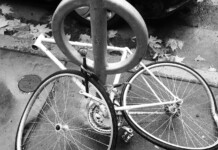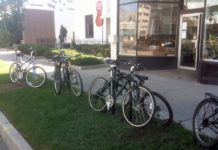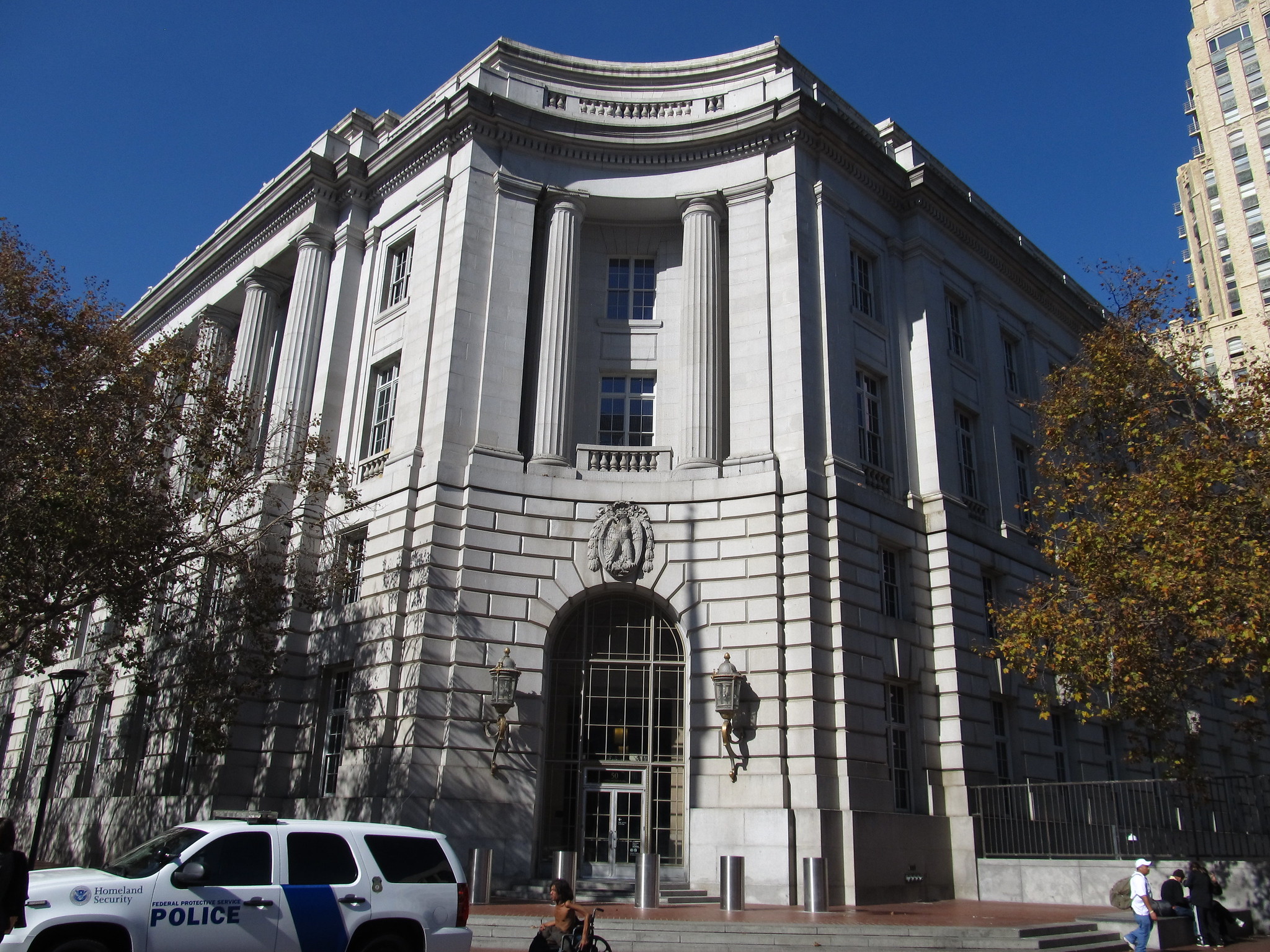By J. Elijah Powell
This is how it usually goes: you find yourself staring with total disbelief at a plot of empty space. The brain reels and you ask yourself if you are sure, absolutely sure that you haven’t made some mistake. Of course, you think, I must have left it somewhere else. Just as quickly, however, it dawns on you that there’s no mistake. That empty space that you are looking at is your new reality. That thing you used to call your bike is gone and chances are that you’ll never see it again.
Originally published in cyclingutah online: January 1, 2014
This is the situation that myself and 1.5 million other Americans (according to the National Bike Registry) found themselves in last year. It’s hard for me to speak for all of those people but if they’re anything like me then the next thing that went through their heads was a set of alternate scenarios. Each one played out before me like a wish of how I could reinvent things with a different ending. There is the one where I traveled back in time and realized how woefully inadequate that lock was and put the bike in the basement. There the one where I see, oh yeah, that only an idiot would lock their bike to a wooden porch and again chose to bring my bike indoors. The most replayed pictures in my mind, however, were ones tinged with heroism, justice and more than a little revenge. There I am coming across the thief in the act and I call the authorities in just the nick of time. There’s the one where I’m able to chase down the scallywag and grab him by the scruff of the neck. The adoring bystanders cheer me on and buoy me upon their shoulders whilst the police lead the malnourished drug fiend away in shackles. These are much more appealing images than the real scene, the one where I’m staring at an empty plot of concrete while traffic courses callously by.
The loss of a bike seems to create as much of an emotional void as it does a financial one. I have heard of Irish style wakes held for lost cycles and of people holding onto the memory of a beloved two-wheeler like a member of the family who has gone before. What that misanthrope who ran off with my bicycle and others like him won’t ever understand is that cyclists are in a relationship with their bikes. Think cowboy and horse.
People feel violated enough to quit riding altogether and this risk of theft is a major reason that people cite for not riding a bicycle.
Bike theft is on the rise in Salt Lake and its environs. The downturn of the national economy and increase in population of the Wasatch Front means this will only become a more common issue in Utah. The examples of this trend are unfortunate and one needs look no further than the theft of Mayor Ralph Becker’s bicycle during a 2010 bike summit to see the immediacy of the issue. What a sad footnote to a meeting to make Salt Lake a more velo friendly city and one that really underscores the chilling effect of bike theft on this transportation alternative. Bikes are stolen daily at the University of Utah and according to a KSTU-TV report over 180 bikes were lifted in the first month of classes in 2010. The ease and style with which bikes get us around makes them an attractive target for theft. They are easily transported and may be quickly turned into cash. They’re analogous to a free cab ride to the bank. Most stolen bikes are never recovered and the Internet has provided a hot new venue for the traffic and exchange of stolen bikes and bike parts.
The rise in bike theft is not unfortunately matched by a rise in police attention. They’re simply too busy pursuing the other crimes that come with population growth to get worked up with stolen bikes. When apprehended, most bike thefts nationally are prosecuted as misdemeanor crimes. This is unfortunate for items that may cost much more than a flat screen television.
The thirst for justice in this environment has led cyclists and police to get creative. Salt Lake Police have used bait bicycles locked in public spaces to apprehend would be thieves in the act. A 2007 Seattle Times article discusses a Portland man and his friends who track down his stolen bike and set up an elaborate sting operation. The advent of GPS technology has opened a new phase, at least till the criminals figure it out, of tracking stolen merchandise.
In his article Who Pinched my Ride which appears in the February issue of Outside magazine, author Patrick Symmes discusses the ins and outs of bike theft and the underworld that fuels it. In this piece, Symmes details his long and intimate response to having his own bicycle stolen. He looks into the anatomy of bike theft, which he claims is a much larger social phenomenon than most of us imagine. He notes that for the lowest often drug addicted rungs of society bikes are one of the solvent forms of currency along with cash, drugs, and sex. Bikes are the only one of these that’s left outside barely protected with a crappy cable lock. Symmes rides along with police in various cities who work on recovering stolen bikes and prosecuting the people who steal them. He also visits notorious spots for fencing hot bikes and uses a small GPS unit to monitor and eventually confront a bike thief.
It’s a slippery slope though. How much can we rely on technology to try to avoid these crimes and how ready are we to confront the people who perpetrate them? The power of GPS only works until the crooks know what they are and they will do nothing to protect your Campy Record derailleur.
To make my point about confronting criminals consider the following. Confucius states that “before you embark on a journey of revenge, dig two graves.” If you’ve seen the Italian neorealist film The Bicycle Thief then you can see where the Chinese guy was coming from. In this movie (which is really worth seeing even if you don’t care about bicycles but especially if you do) the main character has his bike stolen and tries to get it back. The police are not much help so he decides to try and find the crook himself. After a lot of walking and even more walking he is able to corner the guy, minus the now sold bike. To make a long story much shorter and without giving too much away about a great film, he comes out of it looking like a real schmuck and is lucky to not get beat up too bad. Fantasizing about confronting thieves may be entertaining, but the reality of confronting someone who is desperate enough to risk arrest for a few hundred dollars or drugs is clearly not a good idea. Even as much as you love your bike, they may have more skin in the game.
I never retrieved my bike. It was stolen in here in Connecticut, the place I currently live but will not call home due to its noted lack of both mountains and deserts. The news of a stolen bike here barely raises a policeman’s shoulders to a shrug and velo theft is one of the only things emulating a growth industry. I am currently riding a second hand Giant mountain bike that formerly belonged to one of the world experts on the microbiota of cockroach guts, no kidding. It’s not fast and it’s not pretty but it gets me around town. Now if I could only stop trying to spot a moss green Surly LHT every time I see another cyclist.
There are, however, occasional happy endings and people do sometimes recover their stolen steeds. I know a woman in New Haven, Connecticut who had her bike ripped off and then found herself riding next to a guy on it during her daily commute. She was able to get the guy to pull over and there was luckily a police officer nearby that she was able to flag down. However, stories like this are not the norm and we should pursue common sense and think defensively in order to protect our steel, titanium, aluminum and carbon fiber friends.
Here are some suggestions:
1. Record the serial number of your frame. A bike registry will do this as well, but having a copy for yourself can cut down on some work.
2. License your bike. In Utah, all municipalities are required to license bikes. While the system is archaic, it does add an extra protection in case your bike is stolen. Bike shops, fire stations, and city business offices usually have licenses available.
3. Throw away your cable lock. Give yourself extra points the farther away you can throw it. Cable locks are easily cut and the protection they offer is merely cosmetic.
4. Google “U lock” and “pen”. The myriad “how to” videos on DIY sites about how the open a barrel (circular) keyed U lock with the cheapest of ball point pens should convince you to spend a little more on a decent lock with a safer key mechanism.
5. U locks with less space within them allow less space for tools and carjacks and are hence somewhat more secure.
6. Take a picture of your bike. You would be surprised how few bike owners have an image of their bicycle. This may come in handy for recovering the property or if you are fortunate enough to make an insurance claim then you will be glad you had it.
7. Leave locks at your destinations. We’ve all seen the piles of abandoned locks that decorate college bike racks. Granted, they don’t make the city any prettier but leaving a lock behind at a place you ride to daily makes them easier to use and will reduce the amount of weight you have to carry. It’s a good thing to think about when you’ve spent a pile of money shaving off ounces here and there only to then carry a multi pound lock around all over town.
8. Take your bike inside with you. Often this is implausible and gets under the skin of bosses, landlords and shop proprietors. If you can though, it’s a great idea. If you have an employer who is bike friendly, speak to them about providing a secure space for bikes. A former employer of mine was kind enough to put a code entry door on an on site bike shed and thus provide a very safe storage area for the staff bike commuters.
9. Use secure storage facilities. Salt lake City has gone the extra mile and installed indoor storage at the Utah Intermodal Hub as well as rentable bike lockers at numerous TRAX stations. This is a great resource and one that many cities are way behind on.
10. Open your mind to the idea that no lock is sufficient. Once you grasp the idea of what the Buddhists call impermanence and non-attachment, you will realize that the idea that any lock can ultimately secure a bicycle is simply wrong. All kidding aside, if you rely on locks alone you should treat your relationship with your bicycle as something transitory.
11. Reconsider the nuts and bolts of quick release. These levers and skewers that make changing our tires and seat position so fast also make it a really simple task to walk off with our seats and wheels. Security bolts make it a somewhat harder task to rip these parts off. Remember that bike theft can happen one part at a time.
12. Register your bike at nationalbikeregistry.com . This will help you recover your bike if it is found by the police or if it turns up at a pawnshop.
13. Think like a crook. When you lock up a bike think about how secure the location is. For example, a high grade U lock will do precious little to protect your bike if it secured to something that can easily be cut unscrewed or unlatched. The classic “D-oh” moment is realizing the bike was locked to a sign that can be pulled out of the ground.
14. Lock your bike in a publicly visible area.
15. Buy a cheap bike. This is the suggestion of David Byrne in his book of bicycle based musing on the American city Bicycle Diaries. Byrne posits that since any bike can be stolen that we as bike riders have to realize this and then buy bikes that can easily be replaced. This is probably the hardest suggestion for us as American cyclists to get our heads around. We can easily tell ourselves that we need to spend >$2000 on a bike that we can ride a couple times a month and then find it hard to convince ourselves that we can perfectly adequate daily ride for a couple hundred dollars. In many parts of the world like Denmark, the Netherlands or China this is the reigning paradigm. The average bike in these places is not light and it is not fast but it does the job. Check out www.copenhagencyclechic.com and convince yourself that you can still look pretty good on a heavy, slow bike.
Most of all continue to ride. The development of a bike friendly place to live comes with people riding in spite of the threats. Just be smart with how you do it.
Editor’s Note: In April, we will have a follow up article on what to do if your bike is stolen.
Editor’s Note: See the related story:













I would agree with all this but I would also add that it doesn’t hurt to add some tape or other cosmetic that would make your bike look grungy. Nobody wants to steal the dirty old looking bike.
Just a thought.
Comments are closed.